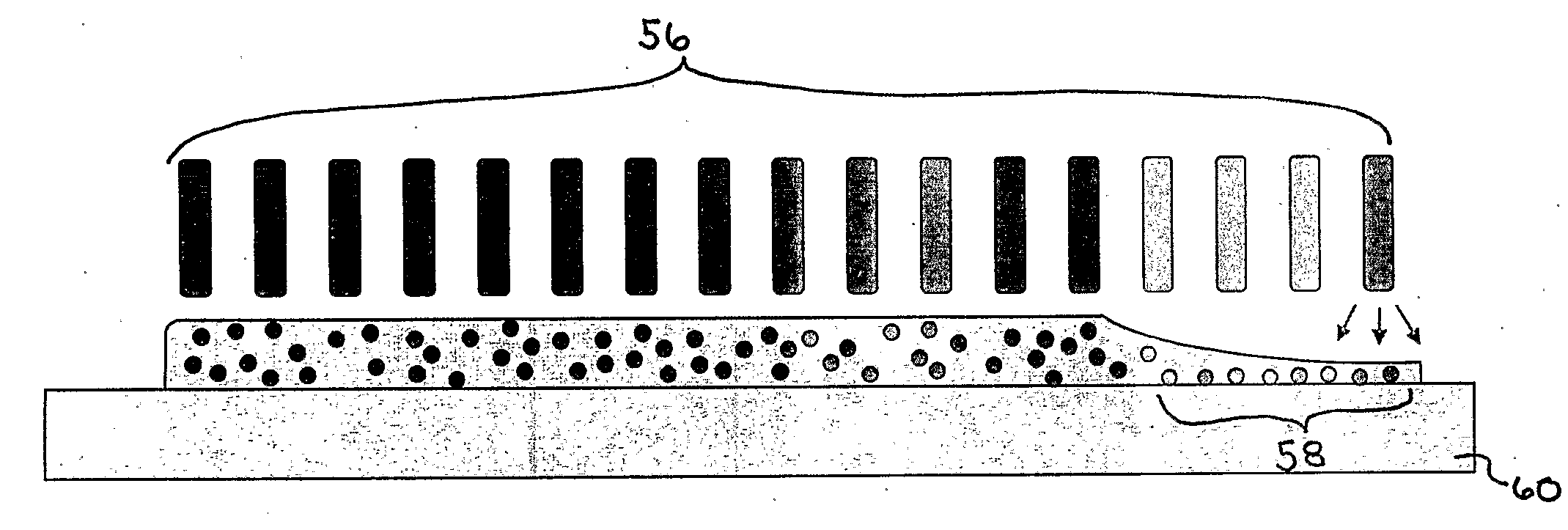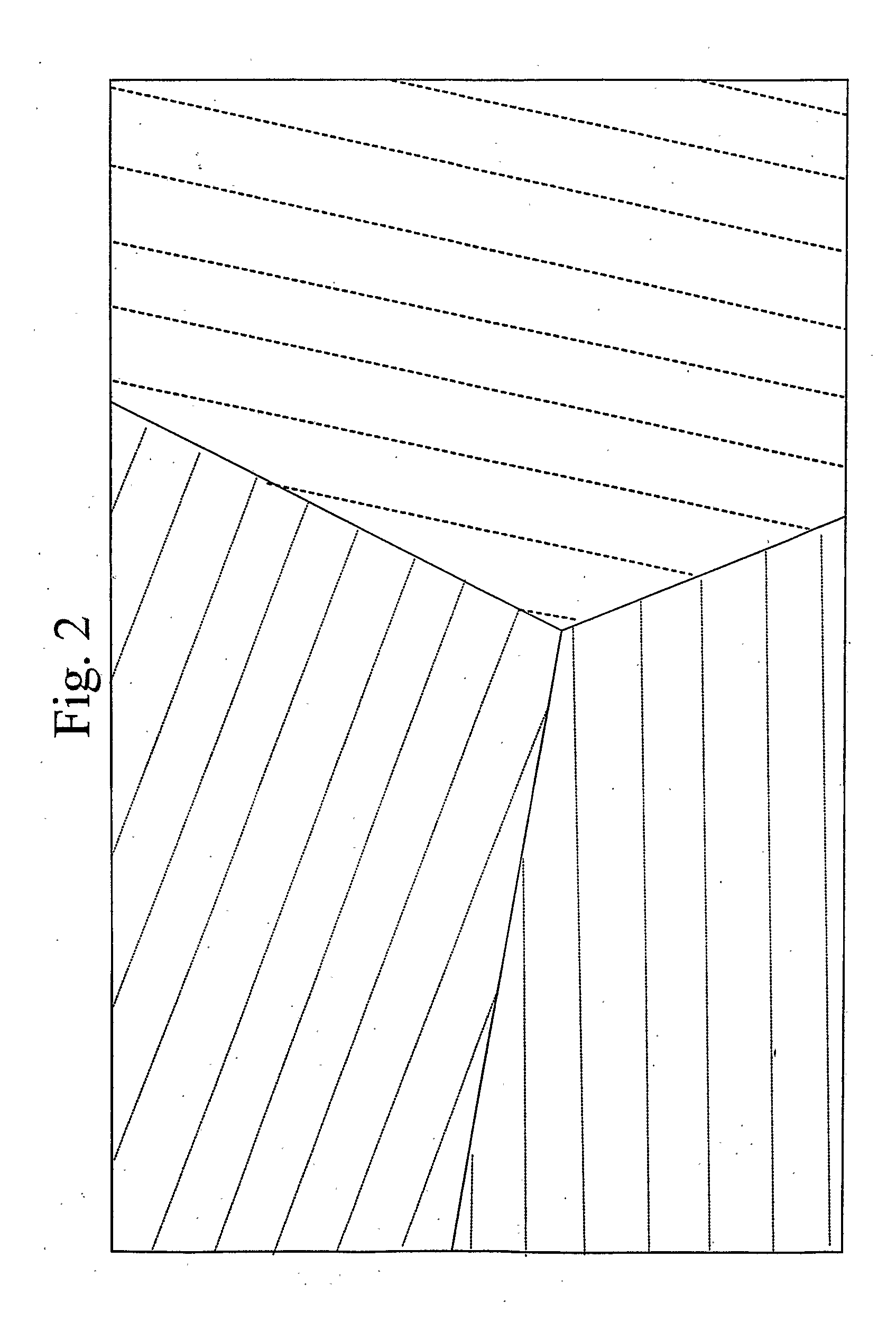Method for Fabricating a Long-Range Ordered Periodic Array of Nano-Features, and Articles Comprising Same
a nano-feature and feature technology, applied in the field of nanotechnology, can solve the problems of non-ordered patterning, interference and noise in the array of sub-50 nm nano-features fabricated according to conventional methods, and difficult to fabricate arrays of nano-features with less than 50 nm feature size with known lithography techniques,
- Summary
- Abstract
- Description
- Claims
- Application Information
AI Technical Summary
Benefits of technology
Problems solved by technology
Method used
Image
Examples
Embodiment Construction
[0042]The present invention relates to methods for the fabrication of long-range, period array of discrete nano-features, such as, for example, nano-islands, nano-particles, nano-pores, nano-compositional modifications, and nano-device components. The term “nano-feature,” as used herein is intended to include any feature, structure, island, particle, pore, device component, composite, or other element that has a diameter or width of less than or equal to 100 nm, preferably less than or equal to 50 nm, and even more preferably less than or equal to 20 nm.
[0043]The terms “long-range ordered periodic array,”“long-range periodically ordered array,” and “long-range periodic array” as used herein are intended to include an ordered periodic array of nano-features having an area of at least approximately 1 mm2, preferably at least approximately 1 cm2, and even more preferably an area of at least approximately 4 cm2. The percentage of non-periodic defects (i.e., nano-features that are missin...
PUM
| Property | Measurement | Unit |
|---|---|---|
| Diameter | aaaaa | aaaaa |
| Fraction | aaaaa | aaaaa |
| Area | aaaaa | aaaaa |
Abstract
Description
Claims
Application Information
 Login to View More
Login to View More - R&D
- Intellectual Property
- Life Sciences
- Materials
- Tech Scout
- Unparalleled Data Quality
- Higher Quality Content
- 60% Fewer Hallucinations
Browse by: Latest US Patents, China's latest patents, Technical Efficacy Thesaurus, Application Domain, Technology Topic, Popular Technical Reports.
© 2025 PatSnap. All rights reserved.Legal|Privacy policy|Modern Slavery Act Transparency Statement|Sitemap|About US| Contact US: help@patsnap.com



